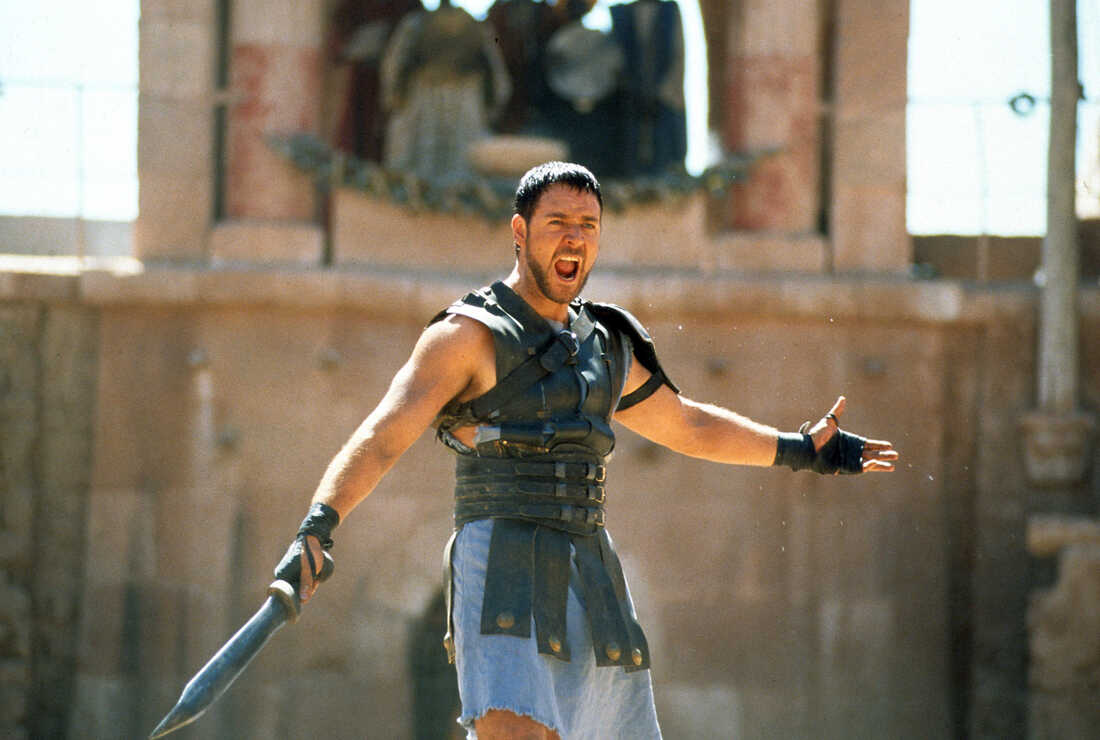
Rebekah is one of the audio describers at Able. Communications Intern Gabriella sat down with Rebekah to find out more about the process of audio describing a film like Gladiator and what makes it live up to it’s name in many ways.
Hi Rebekah, could you tell us a bit about yourself and your role as an audio describer?
I started at Able in 2021. What I love about being an audio describer is that it combines my passion for film and TV with creative writing and accessibility. Prior to starting at Able, I had never even heard of audio description before. It wasn’t until I saw the job opportunity that I thought “this is such a cool service” and feel that it’s something that people should really be aware of. I’m an actor by trade and doing the voicing which is a huge part of the role fit nicely.
Did you know much about closed captioning and audio description before you joined Able?
I had heard about closed captioning but nothing about audio description until I did some research before my interview. I knew captions existed because they’re so much more prominent; but nothing about audio description – I feel like AD flies a little more under the radar for a lot of people. But today, I watch everything with captions if I can because it makes things so much easier.
What has the process for audio describing Gladiator been like? I hear you’ve got up to 400 descriptions and counting!
The descriptions for Gladiator ended up being just under 600 for the entire film. For context, a normal film averages between 250 to 400 descriptions. Gladiator is in a way, living up to its name with the amount of descriptions for it!
As you went beyond the average number of descriptions for a film, can you tell me what else is involved in audio describing a film like Gladiator?
There is a lot of focus required. I kept a document of characters and research open on one screen for the moments where a character who I hadn’t seen since the beginning of the film would return, so the document was useful for those situations. It was important to have that as a backup to figure out who’s who so I can make it clear for the blind and low vision audience using audio description, especially with so many different characters and the length of the film.
It took me around eight days to script audio description for Gladiator. To contrast that with something else, it normally takes me around a couple of hours to script audio description for Shortland Street, including the voicing. The previous movie I worked on was a Hallmark movie so definitely not the same vibe as Gladiator, but it took me around two and a half days to script and about three and a half hours to voice.
In Gladiator, there were quite a lot of fighting scenes involved. I’m curious to know how you balanced describing the fighting as descriptively as you could without going too overboard?
It is a fine balance as you have to leave some room for the awesome sound effects like swords clashing together. Otherwise, people would just be listening to me talk for eight minutes straight! I tended to pick out the most important points of the fight scenes such as when somebody got knocked down or killed and make those moments really clear, rather than every single movement or action which would’ve been overkill. Gladiator is also my Mum’s favourite movie so I did feel a bit of internal pressure to make the audio description really good!
There was a moment in the movie where Maximus pulled out two swords and swung them together like scissors and killed his opponent. For me, that was a really cool – well, it’s not actually that cool because somebody died – but it was a really cool effect. Swinging swords like scissors is quite a clear thing to imagine, so I thought I would describe that part as much as I could instead of the parts where they were just clashing swords together seconds before.
There is a lot of symbolism throughout the movie which I didn’t notice until I did the audio description. One of the instances of symbolism is that Maximus has a breastplate given to him by his slave owner and gladiator trainer Proximo. After every battle, a new image appears on the breastplate and at the end of the movie, Maximus has all these images on the breastplate that are tied to his backstory. Some of the images were of a woman and a boy which represented his wife and son, another was of a tree which represented the trees around his childhood home. To audio describe these images, I rewatched the moments when they appeared several times and studied them so I could be as accurate but brief as possible.
What are your dreams for the future of the role and as an audio describer?
I really want to see audio description fully available in te reo Māori one day (currently, we reflect the language of the programme). I’m nowhere near fluent but I think it would be so cool to work with Whakaata Māori, and for blind and low-vision audiences to have access to te reo Māori audio description, as it is one of our official languages.





